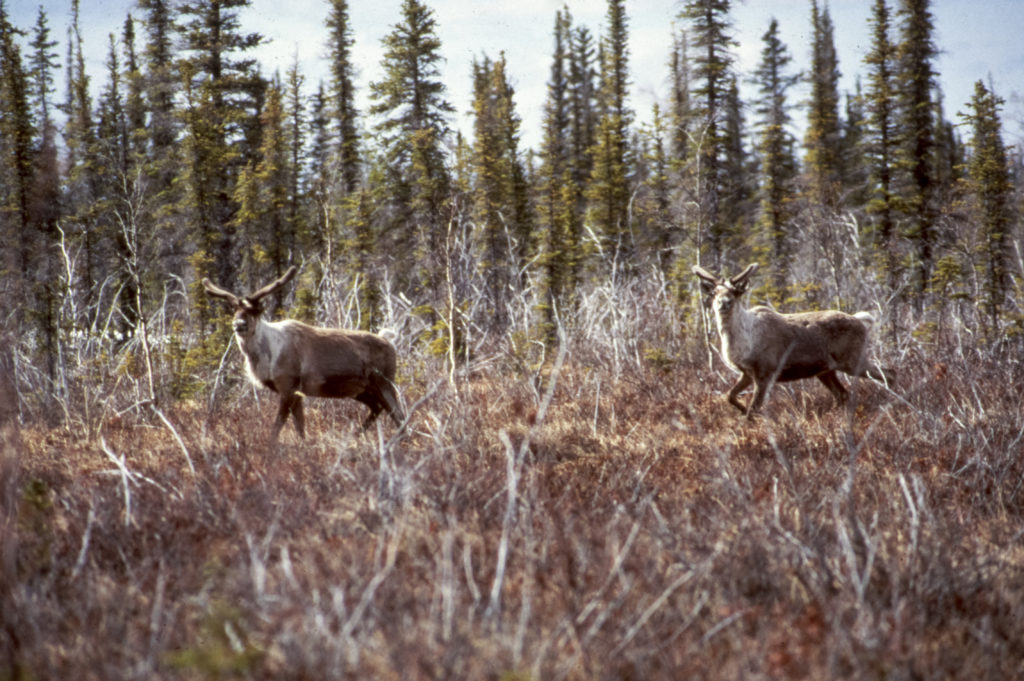Long before the Porcupine caribou became the object of scientific study or conservation campaigns, the Gwich’in were stewards of the animals. As the herd has been threatened by development since the mid-twentieth century, the Gwich’in have continued performing this role in cooperation with settler-governments. The Gwich’in advocated for the 1987 US-Canada treaty, which allows for the transnational management and protection of the herd. In 1988, the government of Canada created the Porcupine Caribou Management Board, which includes representatives from the Gwich’in nation and the government of Yukon. The PCMB would later fund the Last Great Wilderness slide show and recruit Gwich’in representatives for its tours.
The US government has contributed to protection of the herd primarily through research and management by the US Fish and Wildlife Service (USFWS). The agency has published several politically significant reports, like the 1987 Coastal Plain Resource Assessment, which concluded that fossil fuel development in the Arctic coastal plain would pose significant risk to the herd. Pro-drilling federal administrations in the US censored and distorted this report and other caribou research conducted by the USFWS
The conservation of the herd (and the protection of the Arctic coastal plain with it) has been the subject of advocacy by other individuals and organizations, leading to innovative projects like Canadian Parks and Wilderness Society’s “Join the Migration” website. Several photographers have contributed to this cause, including Wilbur Mills in the 1960s and 70s, Lenny Kohm through the Last Great Wilderness slide show, Leanne Allison and Diana Wilson with their 2001 documentary Being Caribou, and, most recently, Peter Mather, whose photo essays have been featured in publications like Macleans and Yukon News.
Though the case for protecting the Refuge has often centered on caribou, the coastal plain provides habitat for thousands of additional animal and plant species. Audubon Alaska has emphasized through advocacy efforts that have showcase the many birds that call the Refuge home. Subhankar Banerjee, another photographer and prominent defender of the Arctic Refuge, captured the seasonal variety of the region and the diverse wildlife found in it through his first photography protect based on Refuge, Seasons of Life and Land. Both sources demonstrate that the Refuge has a complex, transnational ecology, nurturing migratory species that have roles in ecosystems all over the world.


Hi, this is a comment.
To get started with moderating, editing, and deleting comments, please visit the Comments screen in the dashboard.
Commenter avatars come from Gravatar.